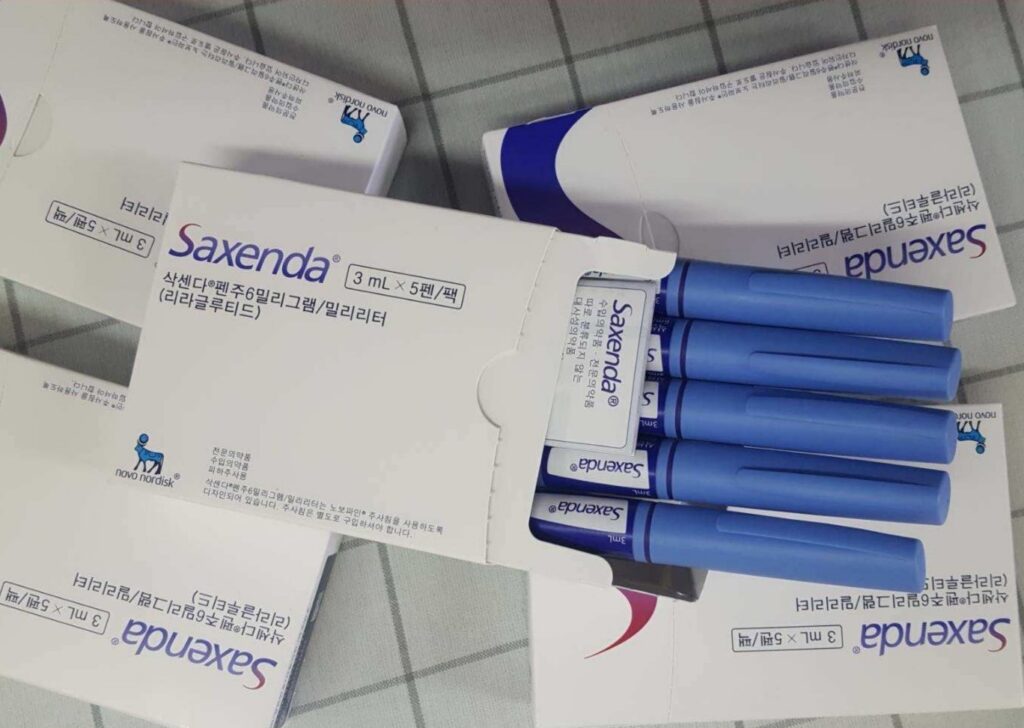
Difference between Ozempic and Saxenda
If you want to Buy or Try OZEMPIC
If you want to Buy or Try SAXENDA

Ozempic and Saxenda are two prescription medications used for weight management. Both drugs are manufactured by Novo Nordisk and contain the active ingredient liraglutide. Despite their similarities, Ozempic and Saxenda have distinct differences in their indications, dosages, and administration methods. In this article, we will explore the key differences between Ozempic and Saxenda.
What is Ozempic?
Ozempic is an injectable medication used to treat type 2 diabetes and aid in weight loss in people with obesity. It is a GLP-1 receptor agonist that works by mimicking the effects of a hormone called glucagon-like peptide-1 (GLP-1) in the body. GLP-1 is a hormone that helps regulate blood sugar levels and promotes feelings of fullness.

Order Ozempic
Ozempic is administered once a week as a subcutaneous injection and is available in two doses: 0.5 mg and 1 mg. The starting dose of Ozempic is 0.25 mg for the first four weeks to help reduce the risk of gastrointestinal side effects. The dose can then be increased to 0.5 mg for another four weeks before reaching the maintenance dose of 1 mg.
What is Saxenda?
Saxenda is also an injectable medication used for weight management. It is a higher dose of liraglutide compared to Ozempic and is specifically approved for weight loss in adults with a body mass index (BMI) of 30 or higher or in those with a BMI of 27 or higher with one or more weight-related medical conditions, such as high blood pressure or type 2 diabetes.

Saxenda is also a GLP-1 receptor agonist and is administered as a subcutaneous injection once a day. The starting dose of Saxenda is 0.6 mg, which is gradually increased over a period of five weeks until the maintenance dose of 3 mg is reached.
Differences in Indications
The primary difference between Ozempic and Saxenda is their indications. While Ozempic is primarily used for the treatment of type 2 diabetes, Saxenda is specifically approved for weight management in adults with obesity.
Ozempic can be used off-label for weight loss in people without diabetes, but it is not FDA-approved for this indication. In contrast, Saxenda is only approved for weight loss and cannot be used to treat diabetes.
Differences in Dosage
Another significant difference between the two medications is their dosages. Ozempic is available in two doses, 0.5 mg, and 1 mg, while Saxenda is only available in one dose, 3 mg.
The starting dose of Ozempic is lower than that of Saxenda, with a starting dose of 0.25 mg for the first four weeks. The dose can then be increased to 0.5 mg for another four weeks before reaching the maintenance dose of 1 mg. In contrast, the starting dose of Saxenda is 0.6 mg, which is gradually increased over a period of five weeks until the maintenance dose of 3 mg is reached.
Differences in Administration
Ozempic and Saxenda also differ in their administration methods. Ozempic is administered as a subcutaneous injection once a week, while Saxenda is injected subcutaneously once a day.
The weekly administration of Ozempic may be more convenient for some people compared to the daily administration of Saxenda. Additionally, the lower frequency of injections may help reduce injection site reactions and improve adherence to treatment.
Side Effects
Both medications have similar side effects since they contain the same active ingredient. The most common side effects of both Ozempic and Saxenda include nausea, diarrhea, vomiting, constipation, and abdominal pain. These side effects are usually mild to moderate and tend to improve over time.
However, Saxenda is associated with a higher risk of side effects compared to Ozempic. This is likely due to the higher dose of liraglutide in Saxenda. In clinical trials, Saxenda was associated with a higher incidence of side effects such as nausea, diarrhea, vomiting, and constipation compared to Ozempic.
Conclusion
In conclusion, Ozempic and Saxenda are both GLP-1 receptor agonists that contain the active ingredient liraglutide. However, they have distinct differences in their indications, dosages, and administration methods.
Ozempic is primarily used for the treatment of type 2 diabetes and can also aid in weight loss. It is available in two doses and is administered once a week as a subcutaneous injection.
Saxenda, on the other hand, is specifically approved for weight management and is only available in one dose. It is administered once a day as a subcutaneous injection.
While both medications have similar side effects, Saxenda is associated with a higher risk of side effects due to its higher dose of liraglutide.
If you are considering using either medication, it is important to discuss your options with your healthcare provider and weigh the potential benefits and risks. Your provider can help determine which medication is best suited for your individual needs and health status.
Overall, both Ozempic and Saxenda can be effective tools for weight management in certain populations. However, their distinct differences in indications, dosages, and administration methods should be taken into account when making treatment decisions.



